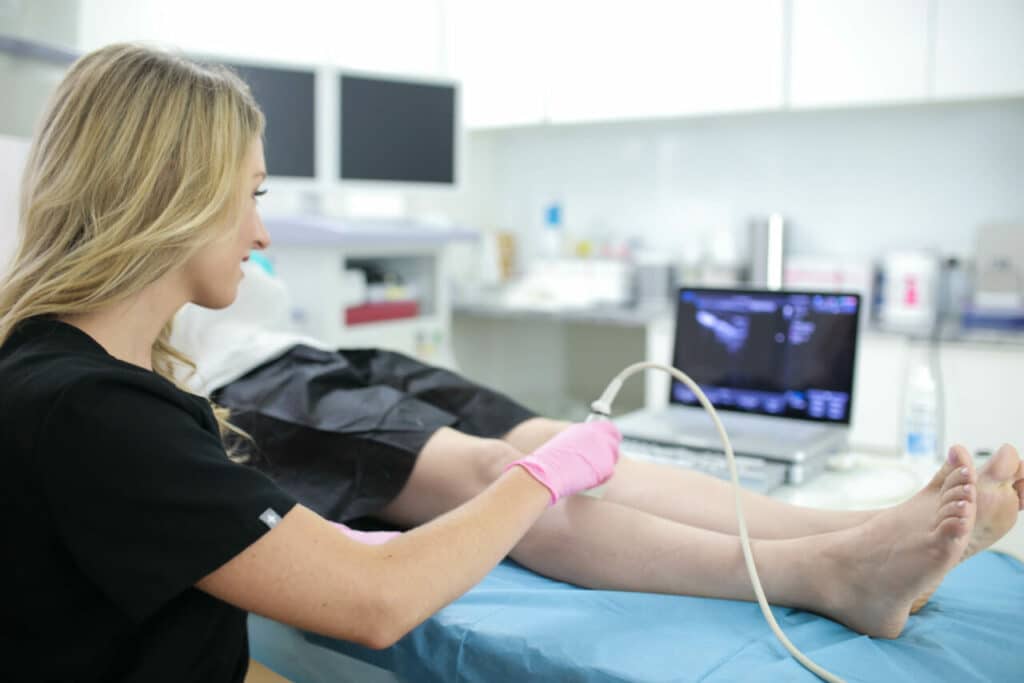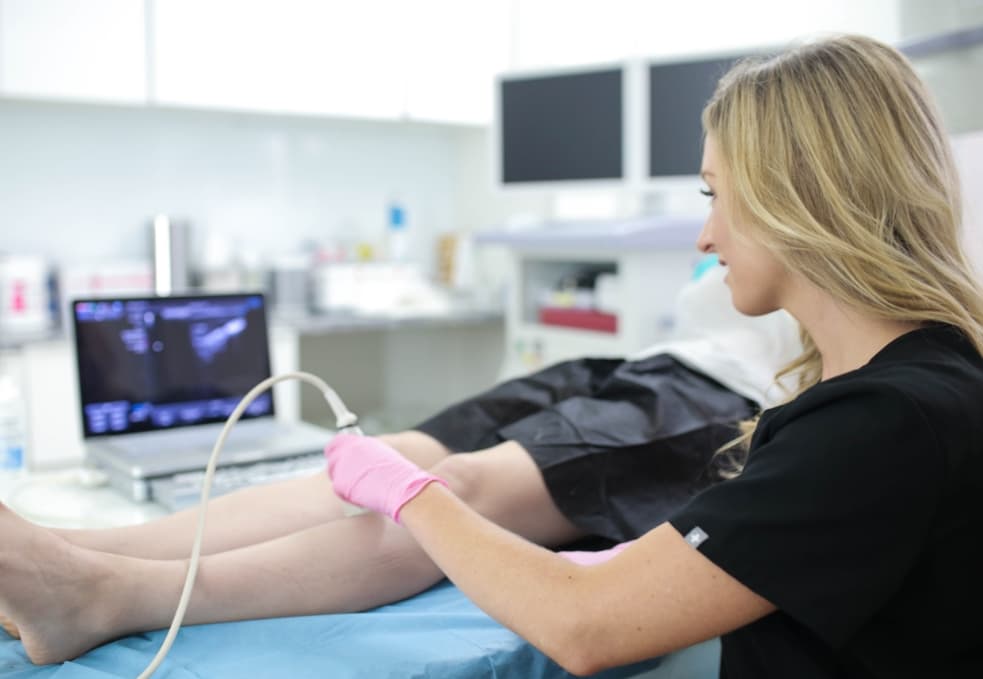How to reverse venous insufficiency?
If you’re asking the question, “how to reverse venous insufficiency,” you might have noticed the symptoms of vein disease. Chronic venous insufficiency can’t be reversed or treated naturally or using home remedies. This is a dangerous medical condition caused by the collapse of vein valves, and there is no way to reverse the condition, though you can reverse the symptoms of vein disease. To understand how to reverse venous insufficiency, you must understand chronic venous insufficiency and its implications.
Before we explain the concept of venous insufficiency and its treatments, it’s worth highlighting the importance of prompt vein treatments. If you notice the signs and symptoms of vein disease, please contact our vein doctors in Long Island without delay. The vein doctors at our reliable vein centers will review your medical history, discuss your goals and symptoms, examine the blood flow in your leg veins, determine if you have chronic venous insufficiency, and curate the ideal minimally invasive vein treatment plan. Please schedule an appointment online.
Please continue reading to learn more about chronic venous insufficiency.

What is chronic venous insufficiency?
Chronic venous insufficiency is a circulatory disorder wherein the vein valves responsible for healthy blood flow to the heart collapse or malfunction. Healthy veins contain valves that act as one-way doors, ensuring smooth, one-way blood circulation to the heart. The collapse of vein valves leads to backward blood circulation, making blood pool in the leg veins. The continued accumulation of blood in leg veins eventually leads to spider veins, varicose veins, and other symptoms of vein disease.
The earliest warning signs of vein disease are restless leg syndrome, frequent leg cramps, leg heaviness, leg pain, broken capillaries on legs, varicose veins edema, leg pain, and skin discoloration. If allowed to continue spreading, venous insufficiency eventually leads to non-healing wounds on the legs, known as leg ulcers, and blood clots in leg veins, known as deep vein thrombosis. If you notice any of the aforementioned signs and symptoms of venous insufficiency, please contact our vein doctors in Long Island.
Can you reverse chronic venous insufficiency?
There’s no way to reverse chronic venous insufficiency. Once the vein valve is damaged or collapsed, blood will flow backward because of gravity, leading to the accumulation of blood in leg veins. As time progresses, even more blood will continue accumulating in the leg veins, thus worsening the situation. There’s no way to fix the damaged vein valves responsible for venous insufficiency, so there’s no way to reverse chronic venous insufficiency.
However, when people ask, “how to reverse chronic venous insufficiency,” they’re usually referring to the symptoms of vein disease, such as spider veins and varicose veins. While you can’t reverse underlying vein disease, you can take certain measures to alleviate the symptoms of venous insufficiency, thus improving your comfort. The best way to reverse the symptoms of vein disease is through lifestyle changes that facilitate blood circulation towards the heart.
The following are some lifestyle changes that can reverse venous insufficiency:
- Wear compression stockings to push accumulated blood towards the heart.
- Elevate your legs while sitting down to facilitate blood flow towards the heart.
- Engage in cardiovascular exercises that activate your calf muscles, such as running, swimming, cycling, and yoga. These exercises increase blood circulation and engage your calf muscles, making them pump some of the accumulated blood to the heart.
- If you have a desk job, take frequent walking breaks to stretch your legs, walk around, and get the blood flowing in your leg veins. This is particularly true for nurses, drivers, teachers, pilots, and those with desk jobs.
The aforementioned lifestyle changes won’t treat underlying chronic venous insufficiency, but they can reverse the primary symptoms of vein disease, such as spider veins, varicose veins, leg heaviness, restless leg syndrome, and frequent leg cramps. Please remember that the relief is temporary, and the only way to permanently treat vein disease is to contact reliable vein doctors in Long Island.
How to treat a collapsed vein?
Once the vein valve collapses or malfunctions, there’s no way to fix the broken vein valve. As such, there’s no way to treat a collapsed vein, and the only real solution is to remove it completely. The best minimally invasive treatments for chronic venous insufficiency focus on neutralizing or removing the diseased vein. Once the diseased saphenous vein is removed, the accumulated blood flows into healthier leg veins, thus restoring optimal blood circulation to the heart. Below, we describe some essential techniques to treat chronic venous insufficiency.
Endovenous Laser Ablation
Endovenous laser ablation involves using laser energy to treat vein disease. The vein doctor inserts a laser fiber into the diseased vein under ultrasound guidance and activates it to generate laser energy. The diseased vein is destroyed, and the accumulated blood reroutes into healthier veins.
Endovenous Radiofrequency Ablation
Endovenous radiofrequency ablation is one of the most effective treatments for chronic venous insufficiency. The vein doctor channels radiofrequency waves into the diseased vein via a catheter to make it collapse, rerouting the accumulated blood into healthier veins.
VenaSeal Closure System
The VenaSeal treatment is one of the latest vein treatments, having received FDA approval in 2015. The vein doctor injects a medical glue into the diseased vein to seal its walls shut, turning it into hardened scar tissues eventually absorbed by the body. The accumulated blood reroutes into healthier veins.
What kind of doctor treats chronic venous insufficiency?
A phlebologist is the kind of doctor responsible for treating chronic venous insufficiency, varicose veins, and spider veins. Phlebology is the branch of medicine concerned with the diagnosis and treatment of vein problems, and phlebologists specialize in minimally invasive spider vein and varicose vein treatments. Our vein centers in Long Island are led by board-certified vein doctors who diagnose and treat the root cause of your vein problems using the latest and safest techniques available.

